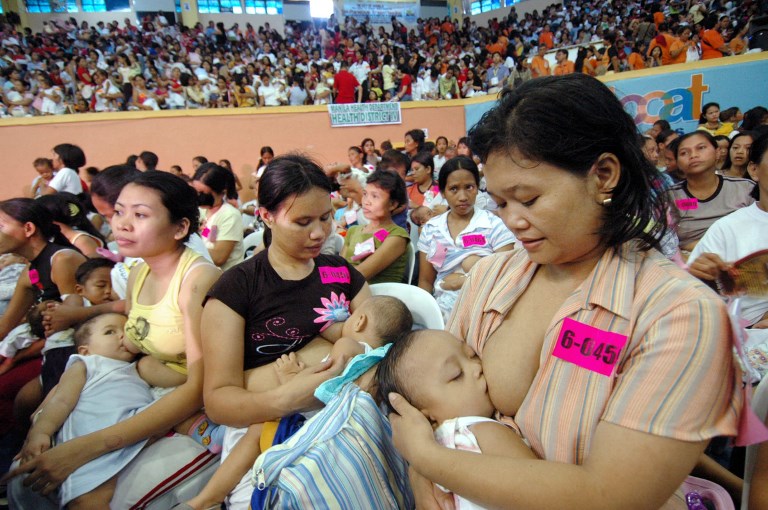Sunlight peeks through the dome of Quiapo Church, an unassuming place of worship that belies its importance in the lives of Catholic Filipinos. Here, the Black Nazarene, a dark-skinned Catholic icon whose face is racked with pain and suffering, has made his home. Within its grimy walls, people have come to seek his help, to ask his guidance. They’re looking for miracles.
Outside the massive doors of the church, however, people seek aid from a group of women wielding a very human set of powers.
These women — and they’re almost always women — are vendors. They sell everything: gugo bark for shiny hair, alum powder for whitening, amulets to bring luck and love, and T-shirts bearing images of the Black Nazarene. But if you’re an unwilling pregnant woman, they are pharmacists, purveyors of Quiapo’s most famous product: Cytotec.
Cytotec is the brand name of misoprostol. Banned in the Philippines, the drug is used to treat stomach ulcers and postpartum bleeding. However, it’s best known here for inducing abortions, an illegal act that carries penalties for both the abortion provider and the woman undergoing the procedure.
In the Philippines, only “therapeutic” abortion is legally allowed, a euphemism for procedures done to save the mother’s life.
In the past few months, several countries — ones with deeply Catholic roots like the Philippines — have liberalized their abortion laws.
Ireland had a much-publicized referendum in May that overturned a longstanding ban on abortion. Chile decided to allow it in certain cases just last year.
Another Spanish colony, Argentina, came exceptionally close to joining those countries when its Congress voted to legalize it in June, only for activists to see their hopes dashed when the Senate rejected the proposed bill today.
This global momentum has offered a glimmer of hope to a young and still decidedly fringe movement to decriminalize abortion in the Philippines. It’s a battle being waged by a tiny group of organizations, one that pits them not only against the government and Roman Catholic Church but a solid majority of the population.
Illegal … and everywhere
The women of Quiapo don’t like to speak to the press, even anonymously, but present yourself as a prospective customer and they’re happy to walk you through the ins and outs of a self-induced pregnancy termination. The word “abortion” is never uttered.

One vendor we spoke with on a recent visit was a woman in her 40s who plies her wares just a few minutes’ walk from Plaza Miranda police station, right next to vendors who produce fraudulent diplomas and documents.

She handed us a piece of paper on which instructions were written explaining how to use Cytotec. Each tablet costs PHP250 (US$4.71), the same price offered by several other nearby stalls.
Cytotec’s dirty little secret is just how easy it is to obtain. It’s there in Quiapo, hidden in plain sight. Some ex-customers said the women hide the medicine in their fanny packs. We don’t ask.
“You can order now, you know. We just don’t bring out the meds because, well, it’s illegal,” one said with a smile.
But abortion isn’t just illegal in the Philippines. It’s a social taboo with deep roots.
In 2013, the Pew Research Center did a study called Global Views on Morality, which surveyed opinions on issues ranging from abortion, to extramarital affairs, to the use of contraceptives.
Of 805 Filipinos interviewed for the project, 93 percent said that abortion is unacceptable, the highest percentage among any country surveyed. But despite that taboo, Filipino women continue to have abortions, an estimated 473,000 yearly.
One young woman we spoke with had been through not one, but two, both self-induced.
17 and no doctor
On the phone, Arvy* sounds 40 years old. In person, she looks like she just graduated from high school. In reality, she’s 25.
Before moving to her grandmother’s house in Bulacan, she lived in a teeming community in Quezon City where men drink and loiter aimlessly. Her old home had thin walls made of plywood. It was on a street called Kaligayahan, the Filipino word for happiness. It was the ideal name, her friends joked, because people there just kept having children.
Arvy had her first abortion there at the age of 17 in the same one-room home where she had grown up.
She had been out of school for a year, a victim of financial circumstances created by her father’s battle with diabetes, when she met her boyfriend.
When she became pregnant shortly thereafter, she was actually happy.
To her, it was all part of a plan. The next step would be to move in together. But as days turned into weeks, her boyfriend became increasingly distant. He began avoiding her.
One day, she managed to catch him at his home. He was sitting in a chair, drunk. When asked why he had been MIA, he told her the truth: he wasn’t ready to be a father yet.
A week after they broke up, he sent a text message suggesting she get an abortion. An hour after that, one of his friends stopped by and handed her a package of eight Cytotec tablets.
She was seething, but understood that bringing another person into the family was problematic. The last thing her parents needed was another mouth to feed. An unemployed, high school dropout, she had no interest in being a single mother. The anger she felt toward her ex made it that much easier.
At about 9pm, she began taking the meds. As the hours went by, the pain began slowly rising in intensity. It felt like someone was repeatedly stabbing her in the gut. The pain was so severe she didn’t even think of calling any of her friends for help. She simply prayed and waited.
Once the fetus was ejected, she felt she had no choice but to flush it down the toilet. Her parents couldn’t know. At two months, she thought it looked like a “newly born baby mouse.”
She had a raging fever the next day. She didn’t think of going to the doctor, because money was tight. Her parents, unaware of the abortion, thought it was simply a fever, but she was bedridden for almost a month.
Five years later, she became pregnant again. She already had a 2-year-old child with her current partner, who had two kids of his own from a previous relationship. Both she and her partner agreed another child wasn’t part of their future.
This time, she didn’t feel any pain. It was easier.
Unsurprisingly, Arvy supports legalization, even though she realizes it’s a deeply unpopular position.
“It’s highly stigmatized. People fear it, and they’re disgusted by it, especially Catholics,” she said.
Abortion and the Church
In the Philippines, where roughly 80 percent of the population is practicing Catholic, the Church carries an outsized weight in nearly all levels of society, and it’s not afraid to use that influence to bend public policy.
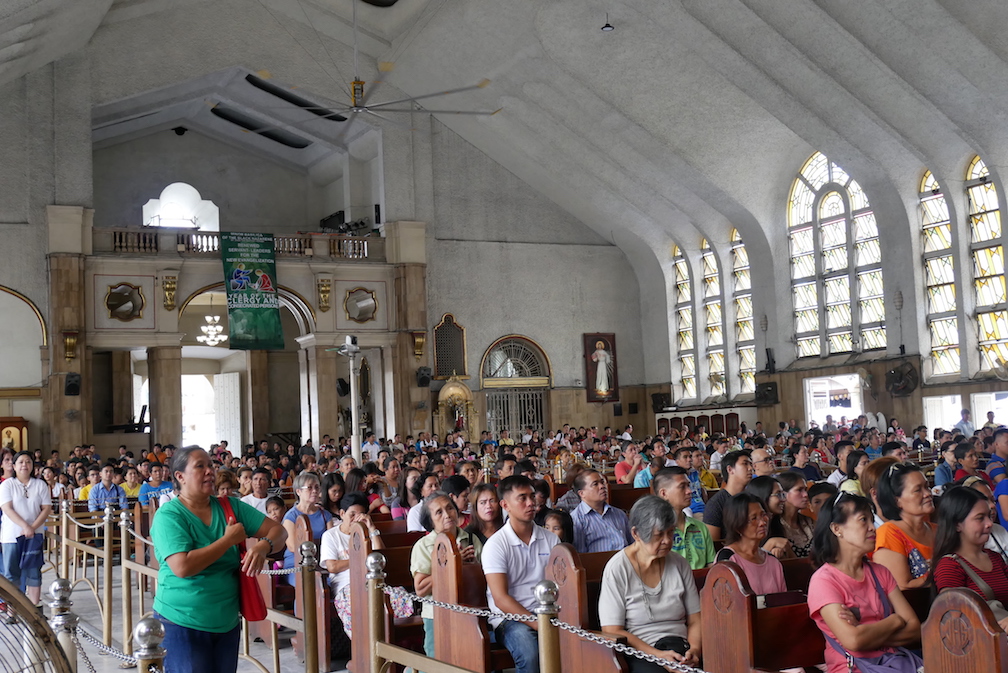
A Reproductive Health (RH) Bill that promises universal access to contraceptives for all Filipinos was signed into law in 2012 but has never been fully implemented.
Catholic Church-influenced pro-life groups used legal maneuverings to stall its implementation for five years. In the end, what the country ended up with was a watered down version — full enforcement now depends on the will of local officials, who are subject to their own personal and religious beliefs. Provisions that would have penalized them for failing to fully implement it were scrapped.
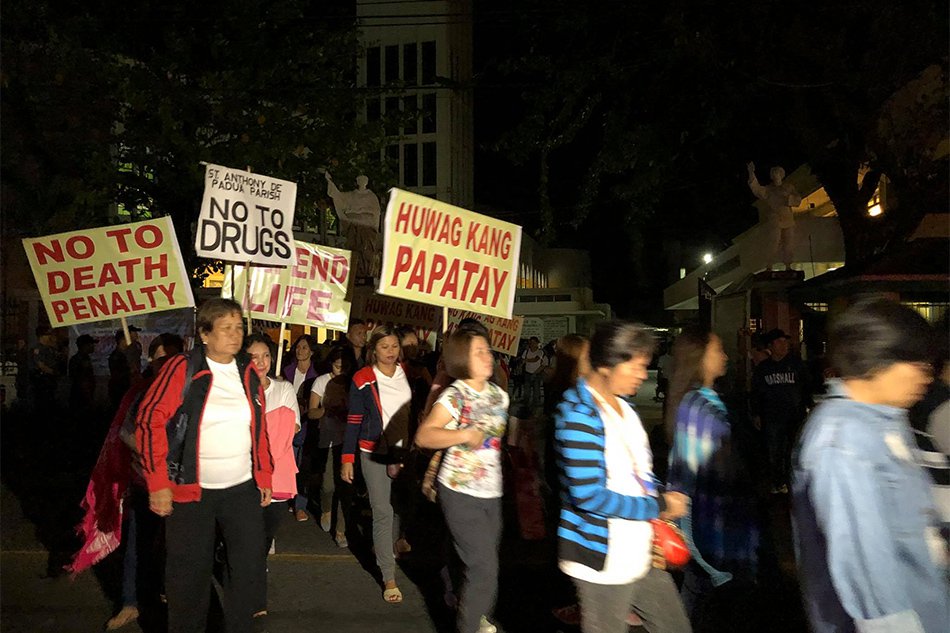
Politicians must now think twice of disseminating condoms and pills, especially in rural towns where priests might encourage the faithful to vote against them. In effect, the law has been rendered nearly toothless, proving the Catholic Church’s might.
The Church sometimes loses battles, but ultimately, they win wars. This is an organization whose support of the 1986 People Power movement led to the removal of Ferdinand Marcos from office. If they could manage to kick out a president, they can also crush fringe movements who oppose their teachings. And one of its most important teachings revolves around the sanctity of life.
Father Melvin Castro, former executive secretary of the Catholic Bishops’ Conference of the Philippines’ Commission on Family and Life, explained the Church’s concept of life, one that begins at conception, to Coconuts Manila in June.

“How will scientists say that there is life on another planet? The mere fact that there are bacteria there, they will say there is life. [Similarly] the moment that the sperm cell and egg cell have fertilized, it’s already life,” he told us in a small room at Quezon City’s Immaculate Conception Cathedral of Cubao.
“Anything you do to curtail that [fetus] either through chemical or surgical abortion, that means you’re curtailing life.”
Life, however, is exactly what’s at stake in the minds of those pushing decriminalization.
As evidenced by Arvy’s experience, self-induced abortions can be dangerous, and maternal mortality rates remain unnecessarily high for those who can’t obtain a professional procedure safely.
Data from the Guttmacher Institute show that 1,000 Filipino women die from botched abortions each year. The same report indicates that many doctors carry deep biases against women who have had abortions.
Father Castro, however, insisted that women who have had abortions are getting the necessary treatment after the fact in hospitals and clinics.
“Before, it was a cultural thing, they [healthcare professionals] really didn’t want to [take care of the women]. But now, they don’t care,” he said.
The uphill battle
At a July meeting of the Filipino Freethinkers, the day’s presentation comes courtesy of the Philippine Safe Abortion Advocacy Network, aka PINSAN, perhaps the most high-profile group in the uphill battle for decriminalization.
Some of the group’s most vocal and supportive members also belong to the Filipino Freethinkers.
Composed of atheists and agnostics, the organization’s president is Red Tani, a bespectacled, reed-thin man who invited Coconuts Manila to a talk he hosted for PINSAN titled “Telling Truer Stories of Safe and Legal Abortion.”
The packed event is one of a series they’ve held in the hopes of minimizing the stigma surrounding abortion by discussing it openly.
Afterward, standing in a now-empty conference room, a visibly exhausted Tani told Coconuts Manila: “[It’s done] to increase understanding [of abortion]. Of the facts, of what actually happens, the reality. You’d enjoy it if people do change their minds, but you have no control of [what they think after the talk]. That’s up to them.”
One of the most emotionally affecting moments of the evening occurred when one woman told the group how she had undergone the procedure as a teen. Despite believing she had made the right decision, she broke down in tears, still plagued by guilt.
Most of the women talked about how Catholicism has shaped their families.
Tani, whose group is firmly pro-choice, has never hidden his disdain for the Catholic Church. He understands that decriminalizing abortion means taking on the church and its political allies.
Ultimately, that will mean legislation.
To that end, PINSAN has spent three years fighting a quixotic battle: to find a Filipino lawmaker, just one, willing to sponsor a bill that would decriminalize abortion.
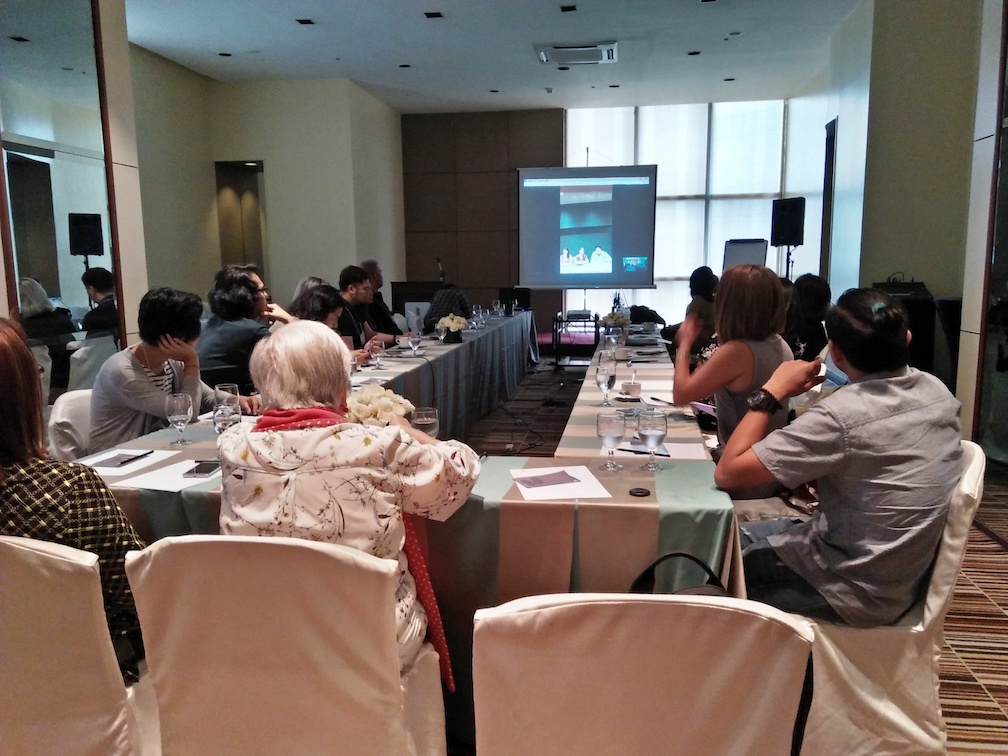
Conservative lawmakers like Vicente “Tito” Sotto and boxer-turned-Senator Manny Pacquiao, who publicly rail against abortion, are in no short supply.
But finding a legislator who will speak openly in favor of decriminalization is a far more difficult matter.
Marevic Parcon, the Asia Regional Coordinator of the Women’s Global Network for Reproductive Rights (WGNRR), says the group already has two congresspersons — neither of whom she would name — who have promised to support a bill that would call for decriminalization.
A much tougher nut to crack, however, is finding one willing to put their career on the line to sponsor the bill.
Our own calls to legislators proved to be futile. Many were unreachable, while others simply said they were busy, proving that abortion was a thorny topic even the most liberal lawmakers weren’t ready to go on the record.
Yet despite that seeming lack of traction, PINSAN keeps asking for meetings, keeps making their case.
They often point to the 2015 recommendation by the UN’s Committee on the Elimination of Discrimination Against Women (CEDAW) that the Philippine government legalize abortion in “cases of rape, incest, threats to the life and/or health of the mother or serious malformation of the fetus.”
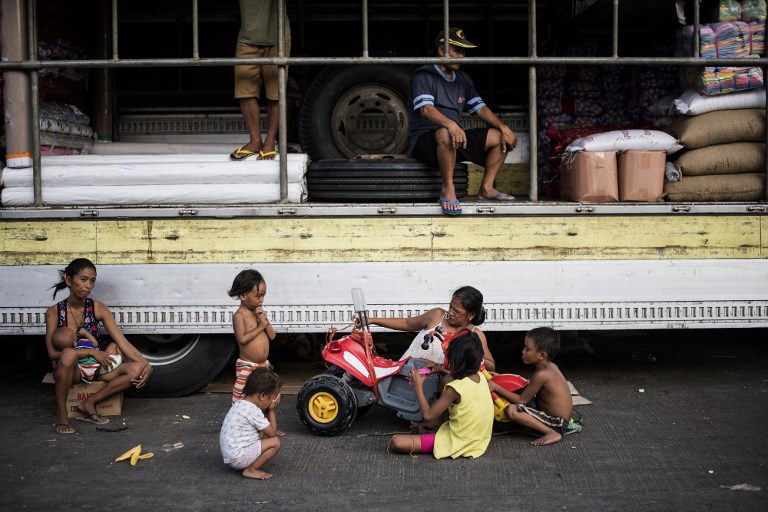
Educating politicians about CEDAW’s recommendation is something Parcon has made central to her message, though she’s quick to point out that there’s no single formula to achieving decriminalization and that the group is observing the way pro-abortion advocates in other countries have achieved their goals.
“Our push is to engage policy makers while combining it with winning public support. We hold briefings with politicians where we tell them about the recommendations of CEDAW,” she said.
Parcon’s unwavering faith in her cause is born, she says, of the fact that she has not been always pro-abortion. She went through what she describes as her own “journey.”
“I didn’t wake up one day and think ‘I’ll fight for this’,” Parcon told us in July. “I also held my own stigma regarding abortion. I grew up a Catholic. I was taught that abortion is wrong. There were also times that I was guilty of perpetuating that view.”
Working with feminist organization GABRIELA (The General Assembly Binding Women for Reforms, Integrity, Equality, Leadership, and Action) however, changed her perspective, gradually offering her a broader understanding of a woman’s reproductive rights, including the right to a safe abortion.
And if her worldview can change so dramatically, Parcon believes, so can that of lawmakers.
“I know critics will say that it [decriminalization of abortion] is about killing people. They will slap your face with that. I understand why congresspersons doubt this is a cause worth taking on,” she said.
But she believes that ultimately, the logic of her position will break through what she sees as an anti-intellectual approach to the issue.
“Some of them even went to Harvard,” she says with a grim chuckle. “If a woman who lives in the slums could understand that curtailing abortion is curtailing human rights, how about them?”
There are days, Parcon says, when she doubts if all the trouble is worth it, when she feels like she’s “screaming in the middle of a crowd but no one listens.”
But in spite of the long odds, she’s convinced it’s only a matter of time.
“All it needs is perseverance,” she said. “We will continue to study what worked in other countries and apply it in the [Philippine] context.”
“We are not doing this for selfish reasons,” she added, a tinge of exasperation finally becoming evident in her voice.
“This is about saving women’s lives. It’s for everyone.”
*Name has been changed to protect the interview subject’s anonymity.
